
Overview: A young woman commits herself to a psychiatric clinic, claiming that she has the power to end the world. The doctor in charge of her care will try to reconcile his Cartesian mind with the possible necessity to save the world.
What were your initial discussions about the visual approach for the film? What look and mood were you trying to achieve?
The initial discussions were not so much about the visuals at first. We talked at great length about the characters and who they where and why they did what they did. In a way this story is very personal for Sarah the director and I really wanted to make sure we were hitting the right emotional beats and that I thoroughly understood the story. When working out the visuals of the film we mainly just talked about our likes and dislikes and that way came up with a rulebook of what was part of the language. Anamorphic widescreen, slow and minimal moving camera on tracks or steadicam the muted and colder colour palette. Part of this rulebook was also identifying when to break said rules like being more free with camera movement and light warmer for example.
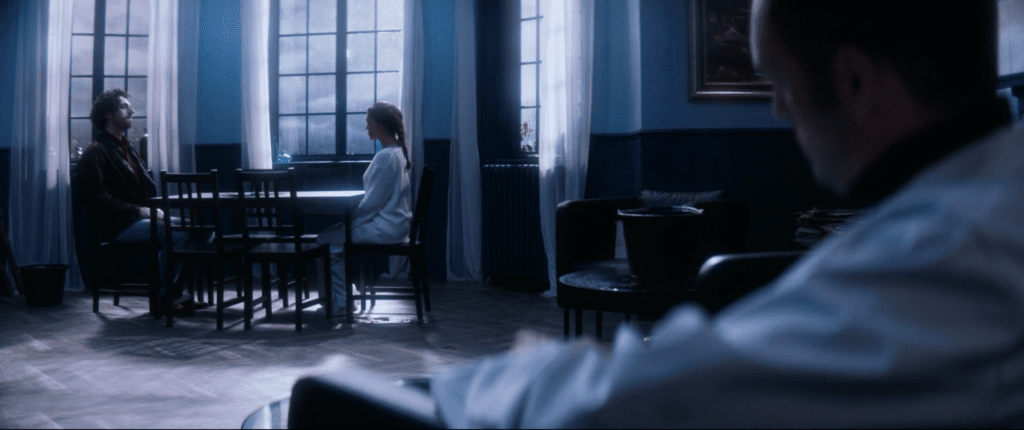
What were your creative references and inspirations? Which films, still photography or paintings were you influenced by?
Tarkovsky was a big one for us, mainly his film Nostalgia. We also looked at Melancholia and Dogvile. We also looked at the film Corpus Christi from polish director Jan Komosa and shot by Piotr Sobocinski Jr. mainly for its lighting and use of color. Also the painter Andrew Wyeth’s work was a big inspiration for the way how he captures this sense melancholy and used this for the transitional shots in the film. We also ended up putting in a little homage to Leonardo Da Vinci’s last supper in one of the later scenes of the film.
What filming locations were used? Were any sets constructed? Did any of the locations present any challenges?
95% of the film is shot on stage with amazing sets designed by our production designer Melina Veropoulou, there was only one exterior scene which is the opening of the film which was shot at Pangbourne College. A boarding school near Reading that is essentially an establishing of the exterior. I think the most challenging part of the set builds was being able to construct all the sets within the stage while they also had to fit in a water tank to be flooded for the later scenes in the film. Because of the flooding and actors availability every set had to be pre lit permanently which was quite a challenge to fit within the time and budget. This did help us massively while shooting. It gave us the ability to shoot on a lot of different parts of the stage on the same day without it giving us too much loss of time.
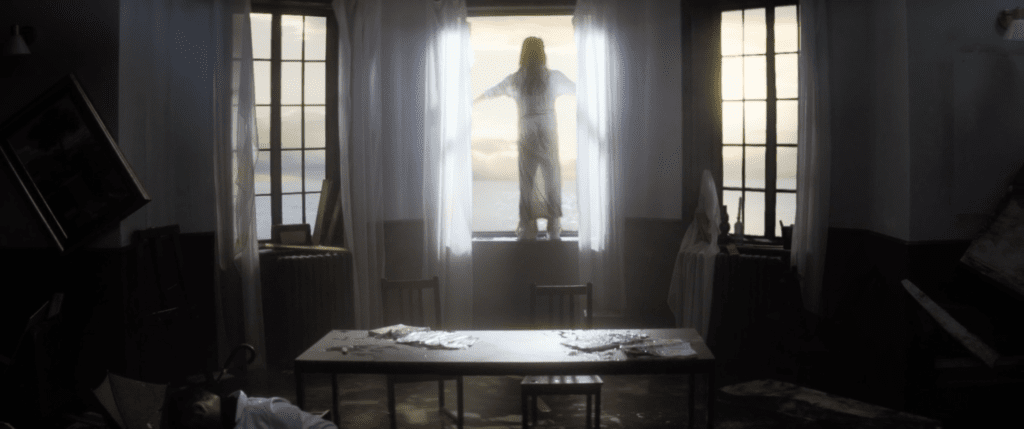
Can you explain your choice of camera and lenses and what made them suitable for this production and the look you were trying to achieve?
We shot the film digital on the Alexa mini with a mix of e-series and HS anamorphic lenses from Panavision. We were shooting during one of the most busy times in the UK industry and Lee Mackey was kind enough to fit our request in. The anamorphic idea came from a discussion between me and Sarah the director about a certain theatrical nature of the film and its setting and we felt that wide screen gave us the ability to fit two opposing characters in the frame as two opposing worldviews. Something that we ended up using in more frames than expected when shooting large groups. Apart from that I’m a big fan of how an anamorphic renders faces. The combination of the HS en E-series gave me the ability to really play with the out of focus areas and control the distortion that the lenses have or lack there of for particular lenses. For a lot of scene where Dr. Clark played by the lovely Brendan Patricks is slowly loosing control over the situation we would use the HS lenses wider open to emphasise his loss of clarity so to say.
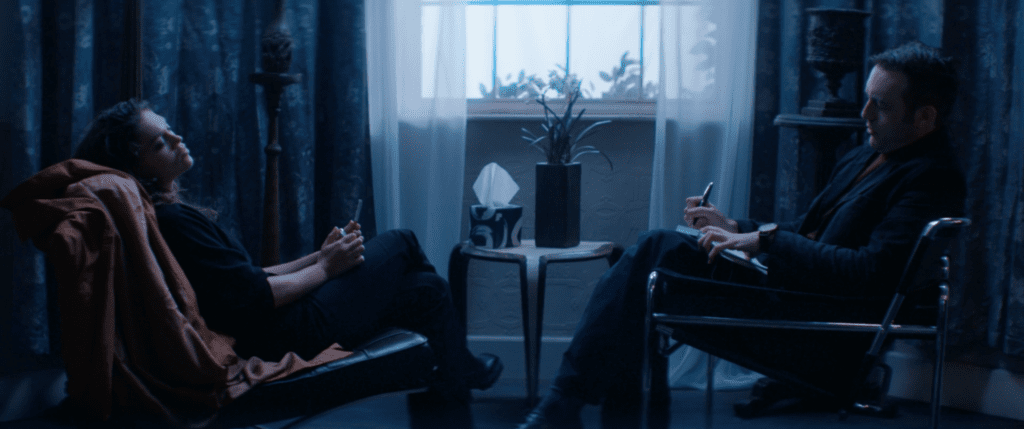
What was your approach to lighting the film? Which was the most difficult scene to light?
In a film like this with lots of moving parts and larger groups of actors in the same scene my idea early on was to light the sets in a way where I would need as little relights as possible when moving between sets and shots. I also am a strong believer in not giving the actors to many marks and boxing them in to much because I think when having more freedom to move they way they want this results in better performances and a space for them to really use the space to their advantage. So the lighting was setup so that when we went for the reverse it was mainly just turning things on and off instead of introducing a lot of new sources or moving existing sources around.
Seeing that the film is set in this gloomy weather and I had early on thought the light from the windows needed to be soft and cooler but because of all the water SFX on the windows I still needed harder backlight to make that visible. So I ended up using 12k’s for the window but pushed through a thick diffusion. This was then pulled round with softer sources inside the set elongating what came from the windows. Not the most complicated setup in the world but very effective. The last scene of the film relies heavily of VFX backgrounds. This was the first time for me creating a complete VFX background in such a large set while also having a camera moves through it and revealing the new changed world outside. Something I’ve learned a lot is how important pre-vis is for shots like these and having very clear early on what’s going to be put on the green screen and matching the light for that. When going into the grade I noticed how much more precise I had to be for the background to really feel part of the same shot.
What role did camera movement, composition and framing and colour play in the visual storytelling?
We tried to use handheld as sparsely as possible and only using it for moments of tension between Willow played by the amazing Sabrina Bartlett and the other characters mainly Dr. Clark. The rest of the film is mainly composed of more still shots on tracks where we were trying to work with a developing master. Emphasising the emotional journey of the scene without putting too much attention to itself. For the scenes where the set is flooded we relied heavily on Steadicam operated by the Wonderfull Nathan Claridge. These scenes later in the film were more etherial in nature and we tried to compose the shots in a way where the camera would move between characters. The blocking was essential for this to work but the group of actors we had were amazing in helping us time out the shots and their marks. Resulting in a tempo in the edit we could could cut less and let the scene develop in front of us.
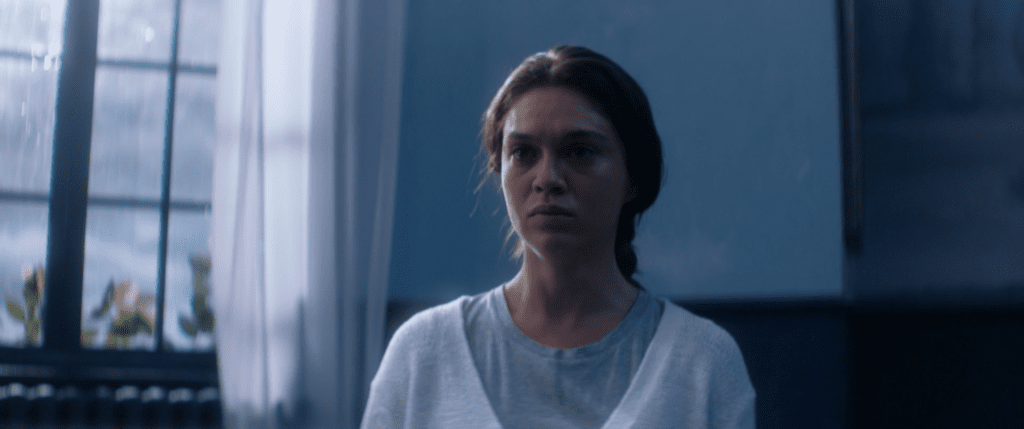
What were you trying to achieve in the grade?
We wanted this film to be cold and quite dark. When pre-lighting I had shot a couple of tests in the set and together with the colour grader Jongheon Lee we created a couple of different LUT’s that I than used for monitoring and referencing while lighting. This really helped already pushing the look of the film into a certain direction where we wanted to take it so in the grade we mostly stuck to that look. The only thing we ended up changing is taking more green out of the look and pushing more bluer hues into the shots. When grading we found that an idea I had to go from a warmer start in the beginning of the film and colder for the later scenes was not working as well so we ended up just sticking to a colder look overall.
Which elements of the film were most challenging to shoot and how did you overcome those obstacles?
To be honest this was the most challenging film I’ve ever shot in my life. I started out shooting docs before moving into drama later right before coming to the NFTS so shooting on stages was something I had done before but never on this scale. Mainly just trying to find a sense of naturalism in the light and looking for “mistakes” or happy accidents that would happen when on shooting on location.
Apart from that there were a lot of moving parts in this film to puzzle together. Flooding the set which heavily changes how we could shoot the scenes SFX rain inside the set and outside the window and large green screen scenes for the end. It was quite a brain breaker to puzzle this all together within the time and budget but when we managed to fit it all together and get it in the can without compromising to much there is just such an amazing sense of achievement. This really made me fall in love with shooting on stages and having the control it gives.
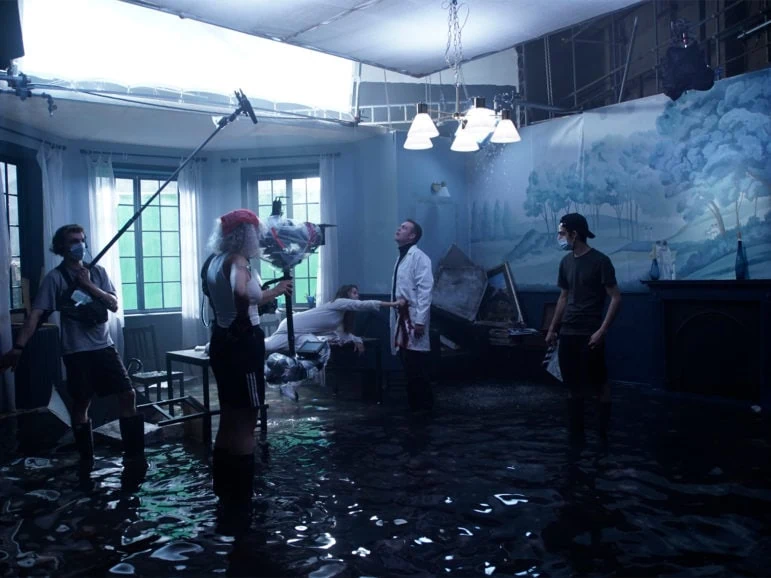
What was your proudest moment throughout the production process or which scene/shot are you most proud of?
This might be the hardest question to answer because there’s always something that you’ve could’ve done better or see in the rushes where you think what if we done…. My most enjoyable moment on set was mostly just figuring out the blocking with the director and the actors. There was a real amazing sense of freedom within that. We had planed quite a large amount of shots before hand but almost always found a blocking that was more effective and simpler but still hitting all the important beats. One more example of this was when we had flooded the set and we had a large scene with all the cast and extras together in the same scene. One character stands up and starts performing a scene from Hamlet while the world is crumbling around them.
We had always planned a steadicam move with him to the centre of the room but there was this magical moment when the rest of the actors joined him an we found that we could just keep the shot alive for so much longer telling almost the whole scene in this one move without having the cut. Things like accidental long takes are something that the director and me were always looking for and when you find them its the best thing in the world.
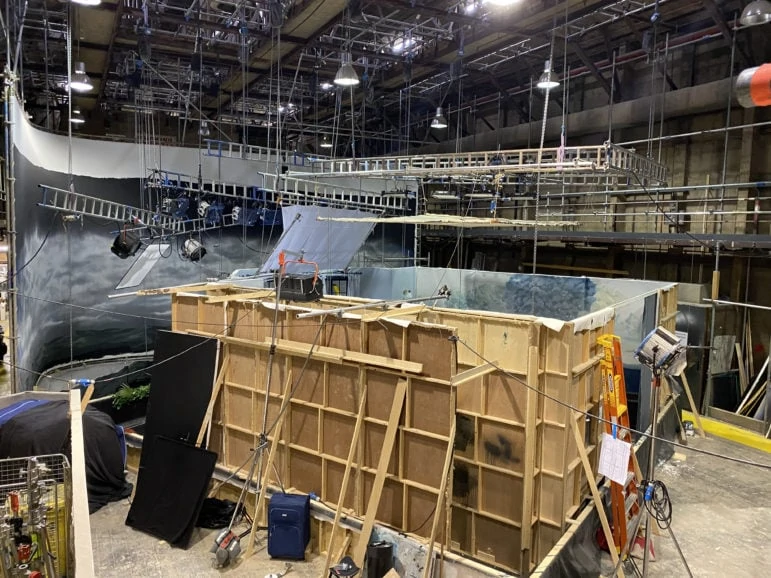
What lessons did you learn from this production you will take with you onto future productions?
When working with VFX have an as clear an idea as possible of what’s going to be put in as an effect and really lock things in early on. Pre-vis is an invaluable tool in this.













